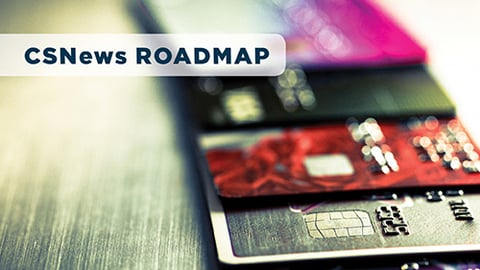Turning Convenience Retail's EMV Mandates Into Opportunity
In less than a year, convenience stores and gas stations will need to be EMV compliant or risk being on the hook for substantial chargeback fees.
But EMV compliance is about more than just avoiding fees. Savvy retailers view it as an opportunity to reinvent the shopping experience and uncover new revenue opportunities while simultaneously increasing their fraud preparedness.
To uncover how retailers can best prepare for the fast-approaching EMV mandate, NCR convenience and fuel product management leader Ernie Floyd sat down with Convenience Store News' sister publication RIS for an exclusive Q&A on the topic.
RIS: Why is it critical for convenience stores and gas stations to invest in EMV compliance? How can technology help?
Floyd: Credit card fraud at gas pumps is increasing. Card issuers lose an estimated $400 million per year on fraudulent mag stripe transactions. But after October 2020, that liability shifts to retailers who are much less able to absorb that cost. EMV is our best current technology for ensuring the card in use is an authentic card. By supporting EMV at the pump, retailers can avoid the liability of fraudulent card transactions, keep transaction costs under control, and protect their brand.
RIS: How should retailers think about ROI for EMV compliance?
Floyd: EMV compliance is sometimes viewed as an “insurance” against fraud. But by also implementing a consumer engagement platform with EMV, retailers can transform it into an opportunity to drive revenue. Personalized offers at the pump bring customers into the store for higher-margin purchases. Or customers can place a foodservice order at the pump and pickup in the store when they’re done fueling. A customer in-store is an opportunity to sell more. So, include both the revenue opportunities and the cost avoidance items in your ROI model.
RIS: What are some best practices for upgrading to EMV technology without disrupting business?
Floyd: An outdoor EMV system is made up of three parts: fuel control, payment control and the outdoor payment terminal. Retailers may get these from different vendors. Thorough project planning and communication is critical for keeping all parties aligned for delivery and successful deployment of EMV.
Since EMV prompts and failure modes are different from mag stripe, you must train your employees so they can support customers through the first few weeks, if needed.
Prepare customers for EMV by letting them know it’s coming to the store. Use your social channels to create awareness and share examples of EMV transactions, while showing you’re committed to securing their transactions.
RIS: What does the future of EMV look like and how can retailers prepare for it?
Floyd: The next big change in EMV will be the accelerated adoption of contactless cards. Card brands are pushing EMV cards into markets with significant mass transit systems. That trend will spread throughout the country as current EMV cards get reissued. Retailers who support contactless and mobile payments will deliver better experiences and attract digital consumers.
The rate of forced change by EMV standards is faster than for mag stripe. Retailers need to support frequent kernel updates and key changes, driving up operational expense. NCR OPTIC allows retailers to remotely manage these updates and reduce operational cost.
Following these best practices, and pairing EMV compliance with revenue-boosting consumer engagement at the pump, provides the smartest way to update your current outdoor payment technology. Click here to learn more about NCR OPTIC.





